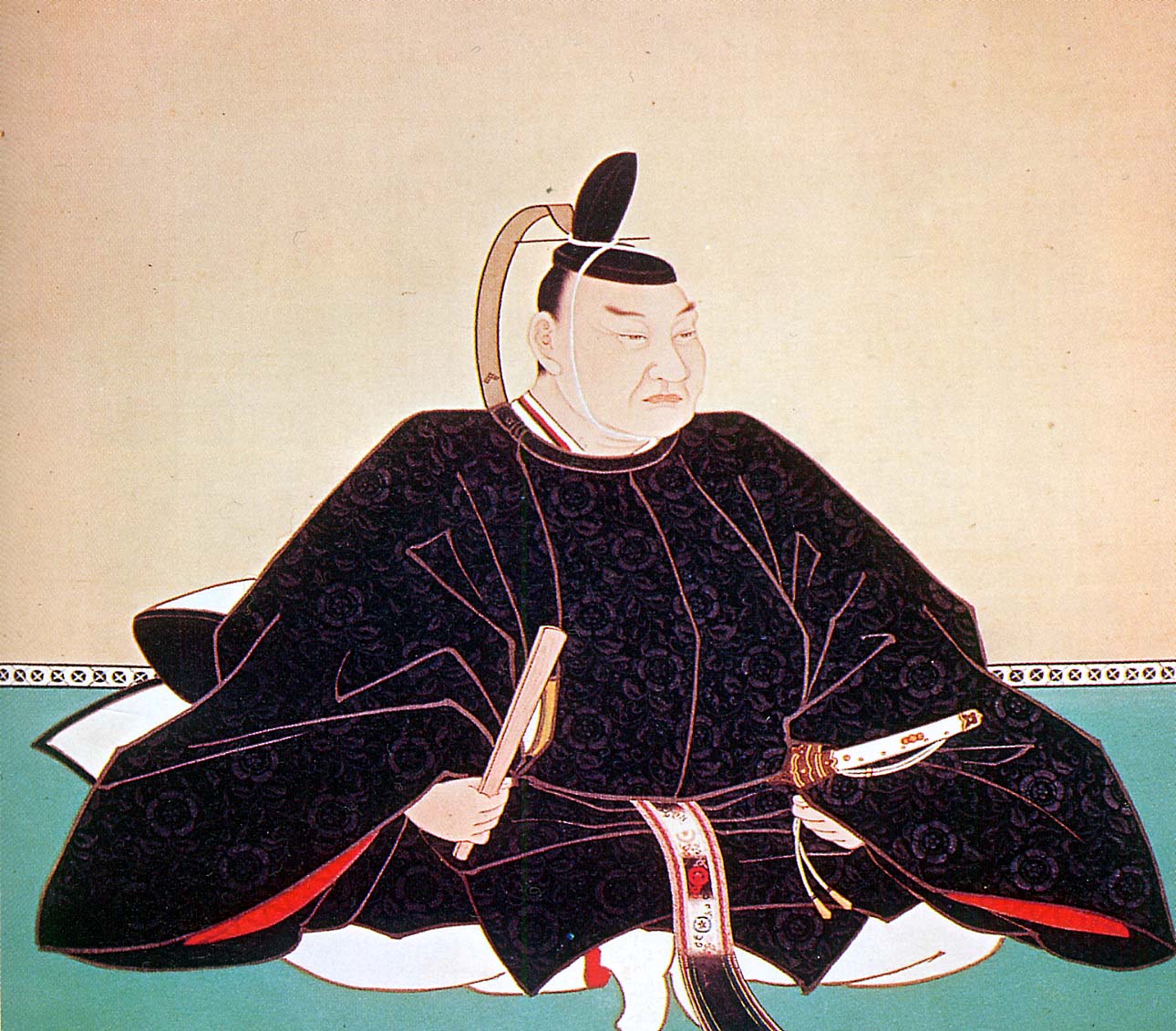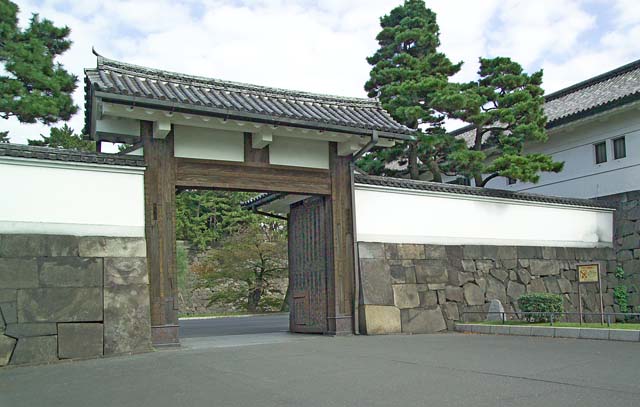|
Sakuradamon Incident (1860)
The was the assassination of Ii Naosuke, Chief Minister (Tairō) of the Tokugawa Shogunate, on March 24, 1860 by ''rōnin'' ''samurai'' of the Mito Domain and Satsuma Domain, outside the Sakurada Gate of Edo Castle. Context Ii Naosuke, a leading figure of the Bakumatsu period and a proponent of the reopening of Japan after more than 200 years of seclusion, was widely criticized for signing the 1858 Treaty of Amity and Commerce with the United States Consul Townsend Harris and, soon afterwards, similar treaties with other Western countries. From 1859, the ports of Nagasaki, Hakodate and Yokohama became open to foreign traders as a consequence of the Treaties. Ii was also criticized for reinforcing the authority of the Tokugawa shogunate against regional ''daimyōs'' through the Ansei Purge. He also made strong enemies in the dispute for the succession of Shōgun Tokugawa Iesada, and because he forced retirement on his opponents, specifically the retainers of Mito, Hizen, Ow ... [...More Info...] [...Related Items...] OR: [Wikipedia] [Google] [Baidu] |
Sakurada Gate
is a gate at Tokyo Imperial Palace, in Tokyo, Japan. It was the location of the Sakuradamon Incident in 1860. Opposite the gate of Sakurada Gate is the headquarters of the Tokyo Metropolitan Police Department, which shares "Sakurada Gate" as a metonym (akin to London's Scotland Yard). - Money post web(01/14/2020) Access * Sakuradamon Station ( Yūrakuchō Line) *[...More Info...] [...Related Items...] OR: [Wikipedia] [Google] [Baidu] |
Townsend Harris
Townsend Harris (October 4, 1804 – February 25, 1878) was an American merchant and politician who served as the first United States Consul General to Japan. He negotiated the "Harris Treaty" between the US and Japan and is credited as the diplomat who first opened Shogunate Japan to foreign trade and culture in the Edo period. He was portrayed by John Wayne in the 1958 historical adventure drama film ''The Barbarian and the Geisha.'' In New York Harris was born in the village of Sandy Hill (now Hudson Falls), in Washington County in upstate New York. He moved early to New York City, where he became a successful merchant and importer from China. In 1846 Harris joined the New York City Board of Education, serving as its president until 1848. He was an avid and critical reader and also taught himself French, Italian and Spanish. He founded the Free Academy of the City of New York, which later became the City College of New York, to provide education to the city's workin ... [...More Info...] [...Related Items...] OR: [Wikipedia] [Google] [Baidu] |
Mitogaku
refers to a school of Japanese historical and Shinto studies that arose in the Mito Domain (modern-day Ibaraki Prefecture). Early The school had its genesis in 1657 when Tokugawa Mitsukuni (1628–1700), second head of the Mito Domain, commissioned the compilation of the ''Dai Nihonshi''. Among scholars gathered for the project were Asaka Tanpaku (1656–1737), Sassa Munekiyo (1640–1698), Kuriyama Senpō (1671–1706), and Miyake Kanran (1673–1718). The fundamental approach of the project was Neo-Confucianist, based on the view that historical development followed moral laws. Tokugawa Mitsukuni believed that Japan, as a nation that had long been under the unified rule of the emperor, was a perfect exemplar of a "nation" as understood in Sinocentric thought. The ''Dai Nihon-shi'' thus became a history of Japan as ruled by the emperors and emphasised respect for the imperial court and Shinto deities. In order to record historical facts, the school's historians gathered local ... [...More Info...] [...Related Items...] OR: [Wikipedia] [Google] [Baidu] |
Uwajima Domain
270px, Date Munenari 270px, Uwajima Date Museum was a feudal domain under the Tokugawa shogunate of Edo period Japan, in what is now western Ehime Prefecture on the island of Shikoku. It was centered around Uwajima Castle, and was ruled throughout its history by the ''tozama daimyō'' Date clan. Uwajima Domain was dissolved in the abolition of the han system in 1871 and is now part of Ehime Prefecture. History Pre-Edo period Uwajima During the Heian period, Uwajima (notably the island of Hiburijima in Uwajima Bay) was center of piracy in the Seto Inland Sea and became the stronghold of Fujiwara no Sumitomo in his rebellion. During the Muromachi period, a branch of the Saionji family was appointed as governor of the area by the Ashikaga shogunate, but was constantly being invaded his more powerful and aggressive neighbors, including Ouchi Yoshitaka, Mōri Motonari, Ōtomo Sōrin, the Tosa-Ichijo clan and the Chōsokabe clan. The Saionji survived by the fluid loyalties and fie ... [...More Info...] [...Related Items...] OR: [Wikipedia] [Google] [Baidu] |
Satsuma Domain
The , briefly known as the , was a domain (''han'') of the Tokugawa shogunate of Japan during the Edo period from 1602 to 1871. The Satsuma Domain was based at Kagoshima Castle in Satsuma Province, the core of the modern city of Kagoshima, located in the south of the island of Kyushu. The Satsuma Domain was ruled for its existence by the '' Tozama'' ''daimyō'' of the Shimazu clan, who had ruled the Kagoshima area since the 1200s, and covered territory in the provinces of Satsuma, Ōsumi and Hyūga. The Satsuma Domain was assessed under the '' Kokudaka'' system and its value peaked at 770,000 '' koku'', the second-highest domain in Japan after the Kaga Domain. Totman, Conrad. (1993) ''Early Modern Japan'', p. 119 The Satsuma Domain was one of the most powerful and prominent of Japan's domains during the Edo period, conquering the Ryukyu Kingdom as a vassal state after the invasion of Ryukyu in 1609, and clashing with the British during the bombardment of Kagoshima in 186 ... [...More Info...] [...Related Items...] OR: [Wikipedia] [Google] [Baidu] |
Tosa Domain
The was a feudal domain under the Tokugawa shogunate of Edo period Japan, controlling all of Tosa Province in what is now Kōchi Prefecture on the island of Shikoku. It was centered around Kōchi Castle, and was ruled throughout its history by the ''tozama daimyō'' Yamauchi clan. Many people from the domain played important roles in events of the late Edo period including Nakahama Manjirō, Sakamoto Ryōma, Yui Mitsue, Gotō Shōjirō, Itagaki Taisuke, Nakae Chōmin, and Takechi Hanpeita. Tosa Domain was renamed during the early Meiji period until it was dissolved in the abolition of the han system in 1871 and became Kōchi Prefecture. History At the end of the Sengoku period, the Chōsokabe clan ruled Tosa Province. The Chōsokabe had briefly controlled the entire island of Shikoku under Chōsokabe Motochika from 1583 until he was defeated by Toyotomi Hideyoshi in the Invasion of Shikoku in 1585. Motochika fought for Hideyoshi in the Kyushu Campaign and the invasions of ... [...More Info...] [...Related Items...] OR: [Wikipedia] [Google] [Baidu] |
Owari Domain
The was a feudal domain of Japan in the Edo period. Located in what is now the western part of Aichi Prefecture, it encompassed parts of Owari, Mino, and Shinano provinces. Its headquarters were at Nagoya Castle. At its peak, it was rated at 619,500 ''koku'', and was the largest holding of the Tokugawa clan apart from the shogunal lands. The Daimyō of Owari was the Owari Tokugawa family, the first in rank among the ''gosanke''. The domain was also known as History Until the end of the Battle of Sekigahara in September 1600, the area that makes up the Owari Domain was under the control of Fukushima Masanori, head of nearby Kiyosu Castle. After the battle, however, Masanori was transferred to the Hiroshima Domain in Aki Province. Leaders Sub-domains The Owari Domain was supported by the Yanagawa Domain in Mutsu Province and the Takasu Domain in Mino Province. Yanagawa Domain The Yanagawa Domain provided 30,000 ''koku'' to the Owari Domain annually from 1683 to 1730, ... [...More Info...] [...Related Items...] OR: [Wikipedia] [Google] [Baidu] |
Tokugawa Iesada
was the 13th ''shōgun'' of the Tokugawa shogunate of Japan. He held office for five years from 1853 to 1858. He was physically weak and was therefore considered by later historians to have been unfit to be ''shōgun''. His reign marks the beginning of the Bakumatsu period. Early years Iesada was born in Edo Castle as Masanosuke (政之助)—the fourth son of the 12th ''shōgun'' Tokugawa Ieyoshi with his concubine, known as Honjuin. As most of Ieyoshi's children died in infancy or before coming of age, Iesada was appointed heir at a very early age, but his interaction with people was very restricted in an effort to prevent contracting any illnesses. Some historians have theorized that he may have suffered from cerebral palsy. He had suffered from smallpox in early childhood, which left his face pockmarked. On the death of Tokugawa Ienari in 1841, concerns were raised on the fitness of Iesada as heir, with Tokugawa Yoshinobu named as a potential successor. However, this was stro ... [...More Info...] [...Related Items...] OR: [Wikipedia] [Google] [Baidu] |
Ansei Purge
was a multi-year event in Japanese history of the Edo period between 1858 and 1860, during which the Tokugawa shogunate imprisoned, executed, or exiled those who did not support its authority and foreign trade policies. The purge was undertaken by Ii Naosuke in opposition to Imperial Loyalists. History The Ansei Purge was ordered by Ii Naosuke on behalf of the bakufu faction.Cullen, Louis. (2003). ''A History of Japan, 1582–1941: Internal and External Worlds'', pp. 184–188. He was the Senior Minister during the period preceding the Meiji Restoration and was part of the '' kōbu gattai'', the movement opposed by the Revere the Emperor, Expel the Foreigner (''sonnō jōi'') faction. The purge was carried out in an effort to quell opposition to trade treaties with the United States, Russia, Great Britain, France and the Netherlands, particularly under the U.S. - Japan Treaty of Amity and Commerce. It involved the removal from power all opposition by way of imprisonment, torture o ... [...More Info...] [...Related Items...] OR: [Wikipedia] [Google] [Baidu] |
Daimyō
were powerful Japanese magnates, feudal lords who, from the 10th century to the early Meiji era, Meiji period in the middle 19th century, ruled most of Japan from their vast, hereditary land holdings. They were subordinate to the shogun and nominally to the Emperor of Japan, emperor and the ''kuge''. In the term, means 'large', and stands for , meaning 'private land'. From the ''shugo'' of the Muromachi period through the Sengoku period, Sengoku to the ''daimyo'' of the Edo period, the rank had a long and varied history. The backgrounds of ''daimyo'' also varied considerably; while some ''daimyo'' clans, notably the Mōri clan, Mōri, Shimazu clan, Shimazu and Hosokawa clan, Hosokawa, were cadet branches of the Imperial family or were descended from the ''kuge'', other ''daimyo'' were promoted from the ranks of the samurai, notably during the Edo period. ''Daimyo'' often hired samurai to guard their land, and they paid the samurai in land or food as relatively few could aff ... [...More Info...] [...Related Items...] OR: [Wikipedia] [Google] [Baidu] |
Tokugawa Shogunate
The Tokugawa shogunate (, Japanese 徳川幕府 ''Tokugawa bakufu''), also known as the , was the military government of Japan during the Edo period from 1603 to 1868. Nussbaum, Louis-Frédéric. (2005)"''Tokugawa-jidai''"in ''Japan Encyclopedia'', p. 978.Nussbaum"''Edo-jidai''"at p. 167. The Tokugawa shogunate was established by Tokugawa Ieyasu after victory at the Battle of Sekigahara, ending the civil wars of the Sengoku period following the collapse of the Ashikaga shogunate. Ieyasu became the ''shōgun,'' and the Tokugawa clan governed Japan from Edo Castle in the eastern city of Edo (Tokyo) along with the ''daimyō'' lords of the ''samurai'' class.Nussbaum"Tokugawa"at p. 976. The Tokugawa shogunate organized Japanese society under the strict Tokugawa class system and banned most foreigners under the isolationist policies of ''Sakoku'' to promote political stability. The Tokugawa shoguns governed Japan in a feudal system, with each ''daimyō'' administering a ''han'' (f ... [...More Info...] [...Related Items...] OR: [Wikipedia] [Google] [Baidu] |








